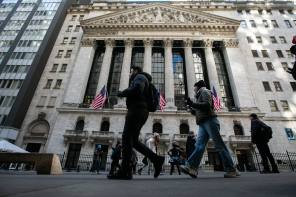
The report suggests that it is “momentum” driving stock markets, with price driving returns, not earnings. “Rising correlations between bonds and stocks are making well diversified ‘safe’ portfolios riskier than they appear”.
The report also outlines what has generally been accepted, that markets “cannot deal with tapering”, highlighting the uncertainties that central bank intervention brings.
These escalating concerns point to the need for advisers to have a greater handle on the risk that their clients are exposed to than ever.
BlackRock presents its forecast for 2014 in probability terms – 55 per cent ‘low for longer’, 25 per cent for the ‘bull’ market case, and 20 per cent for ‘bear’.
Of course “pulling out of markets” goes against the orthodoxy of investing for the long-term – “time in the market”, not “timing the market”.
Nobody is suggesting that advisers who represent investors should adopt speculative strategies. But equally, as markets continue to evolve in new ways that cannot be aligned with previous experience, then the assumptions that derive from examining volatility on the context of past performance will only get you so far.
Volatility is not what it used to be. For example, the consensus of experts, including BlackRock, is that bonds are very expensive, and investors should be factoring in the likelihood of high volatility in these markets should a correction ensue.
Nobody can predict the future absolutely, but what an adviser can do is consider the full range of possibilities and put strategies in place that are optimised through diversification to perform across different possible outcomes.
Volatility
Modern portfolio theory’s concept of the ‘efficient frontier’ based on volatility measurements is no longer sufficient in the light of what we have learnt in recent years. But if volatility can only take you so far, how else can investment outcomes be modelled?
I believe this is the role of the stochastic modelling – estimating the probability of outcomes within a forecast to predict what conditions might be like under different situations.
If an adviser uses a stochastic model, then a couple of things happen. First of all the adviser must have faith in the model. If so, the adviser has a comprehensive ‘qualitative’ measure for risk that can be included with the ‘qualitative’ research on which they normally rely.
This is significant because, as many advisory firms attest, it is difficult to acquire an objective measure for risk. Because there is no ‘qualitative overlay’, there is a consistent process for assessing risk. Secondly and most importantly, the basis now exists for a comprehensive discussion with the client about risk.
It might go something like this: “Mr/Mrs Client, according to our risk model, which has been proven to be accurate in the past, we can predict the growth of your holdings over, say, the next 10 years. You can see that there is a 5 per cent possibility of losing up to 15 per cent of your portfolio in a bad year (we call this the ‘capacity for loss’ figure).
“However, you can also see what the most likely, or average rate of, growth is, as well as the ‘maximum’ likely gain in the event of good market conditions. I can also show you how less, or indeed more risky investment options, are likely to perform according to our model.”
Thirdly, the compliance process is eased immeasurably, due to the availability of an objectively derived risk rating.
The current threat of emasculation by the regulator that hangs over every adviser encourages advisers to manage risk out of the equation, when risk is actually what is required to drive the returns the investor seeks.
The regulator demands that suitability in terms of risk can be demonstrated. A stochastic engine, with the concept of ‘capacity for loss’ as a consistent metric built into it, is designed to satisfy the regulator that the willingness of a client to take a measured amount of risk has been established.
A stochastic model is based on a simulation of multiple outcomes. Assessment of historical data and the full range of possibilities relating to future conditions feed into the model to provide a full range of possible growth trajectories of different asset classes.
Distribution
The model will present a distribution graph to map the likelihood of those outcomes. If an investment option can be broken down into its constituent asset classes, then a stochastic forecast can be made for it.
An easy way to think about the advantage of using a stochastic model is its ability to capture the sequence of good and bad investment years.
Where the bad year occurs in a term will have a massive difference in the investment outcome. It may make the difference between losing money and making money (should the bad year come early). Volatility may be consistent in both cases, so is not necessarily a reliable predictor of returns.
One of the key attributes of a stochastic configuration is that users can ‘project’ on actual holdings. This assists in the review process as much as providing research for the placement of new money, as multiple ‘what if’ scenarios can be run and presented to a client.
In my experience, most advisers have evolved effective and proven investment solutions. What many do not have is access to reliable, risk-based measurement. A ‘qualitative overlay’ means that even the market-leading solutions normally relied on for risk assessment and proof of suitability are themselves, in large part, mere opinion.
Of course nothing is certain in the world of investment, but the use of stochastic projections gives the nearest thing to certainty – an objective measure that provides real value.
Adam Byford is managing director of Capita Financial Software
Key points
* Momentum is driving stock markets, with price driving returns, not earnings.
* An adviser can consider the full range of possibilities and put strategies in place that are optimised to perform in different possible outcomes.
* One of the key attributes of a stochastic model is that users can ‘project’ actual holdings.



